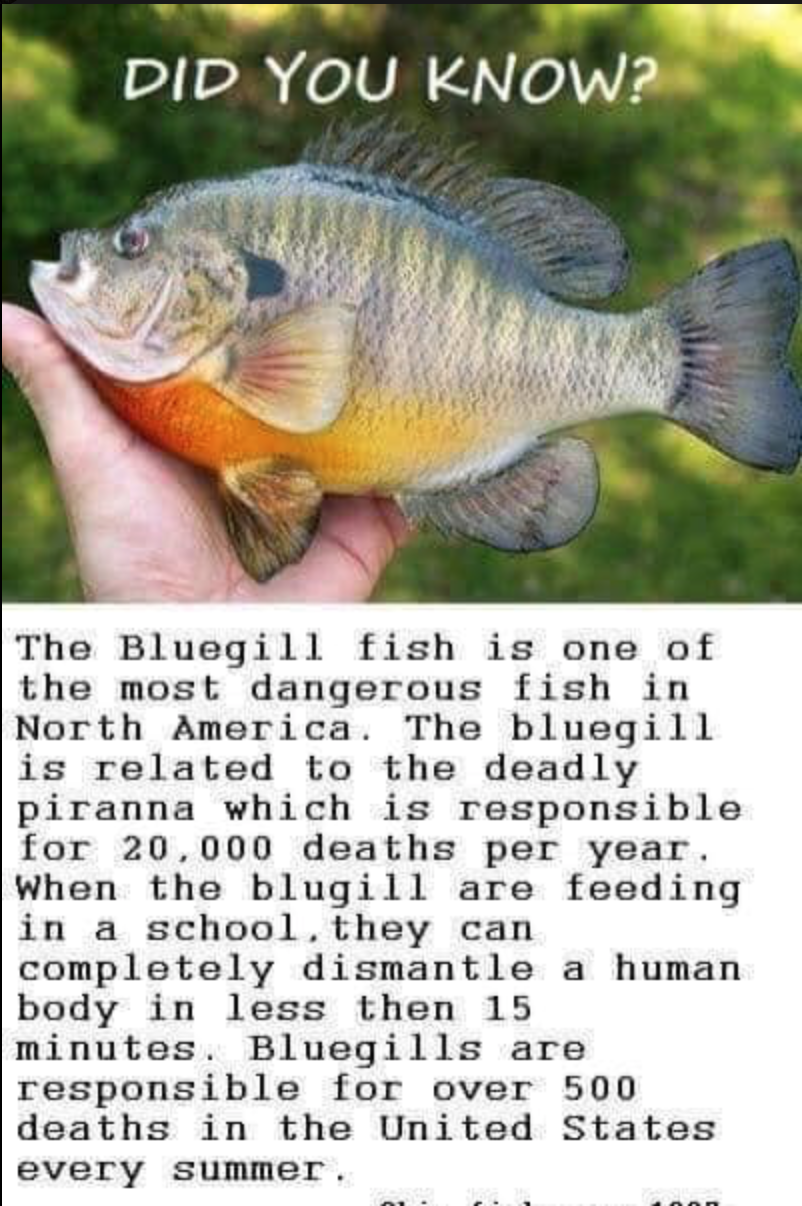FACT CHECK: Is The Bluegill Fish ‘One Of The Most Dangerous Fish In North America’?
An image shared on Facebook more than 9,900 times claims bluegill fish are among the most dangerous fish in North America, purportedly killing over 500 people in the U.S. every summer.

Screenshot/Facebook
Verdict: False
Bluegill fish are neither related to piranhas nor dangerous to humans. There is no evidence they kill over 500 people in the U.S. every summer.
Fact Check:
A viral image of a bluegill fish is being shared on Facebook along with the claim that the fish is related to the piranha and is one of the most dangerous fish in North America.
“When the blugill (sic) are feeding in a school, they can completely dismantle a human body in less then (sic) 15 minutes,” text in the image reads. “Bluegills are responsible for over 500 deaths in the United States ever summer.”
But bluegill fish appear to be non-threatening to humans. The U.S. Fish and Wildlife Service states on its website that their diets consists of insects, insect larvae, small crustaceans and worms, not mammals. The Daily Caller didn’t find any media reports about bluegill fish killing people, only fact-checkers debunking the claim.
Bluegills are also not related to piranhas. Native to North America, bluegills are part of the sunfish, or Centrarchidae, family, while piranhas, native to South America, are part of the Serrasalmidae family. (RELATED: Are Sharks Immune To Cancer And All Other Diseases?)
The U.S. Fish and Wildlife Service describes the bluegill fish as “one of the most popular sport fish.” People have “nothing to fear from the harmless bluegill,” according to Flyer Fish Pro, a dedicated fishing website.
“Now we know that bluegills do not eat or kill humans, and they are not known to bite the human body. In fact, the bluegills’ teeth are very small,” Flyer Fish Pro‘s website reads. “Even if bluegills did try to bite humans, they would struggle to break the surface of the skin. So people have nothing to fear from the harmless bluegill.”
